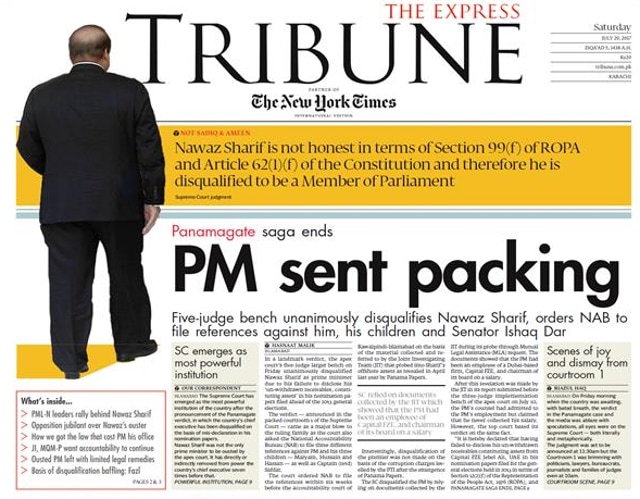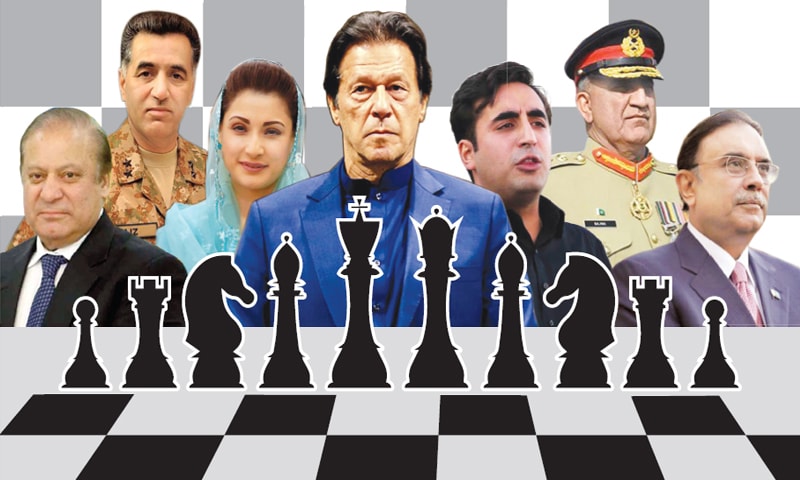
Pakistan…even though is our neighbour country but it is very little that we know about the country. And…when it comes to their politics, it’s even lesser than we know. It is divided into four major states namely; Balochistan, Khyber Pakhtunkhwa (North-West Frontier Province), Punjab, and Sindh. Earlier, Karachi used to be the capital of Pakistan, but later Islamabad…a city was specifically carved out and was made the capital. Demography wise, Pakistan is majorly Sunni Muslim dominated. There has been heavy criticism of Pakistan for the persecution of minority religions; majorly Hindus and Sikhs. Not just, it even discriminates against the Shia Muslims and especially ‘Ahmadiyya’ Muslims. Pakistan has been in news lately, because of the political ‘Game of Throne’ happening there. So, it’s a good time to have a deep look at the whole of Pakistan politics.
A Brief Look at Partition
During the British colonial times, initially, the Congress and the Muslim League, both had a common goal, which was the independence of India. But, around 1930, the stand of the Muslim League shifted towards the demand for a separate state under the leadership of Mohammad Ali Jinnah. It felt that Indian National Congress is not able to carry out the viewpoint of ‘Muslims’ and even accused Congress of being a ‘Party of the Hindus’ (Now, compare it with what Congress is accused of being today). Here, it should also be known that the first demand for separate countries for Hindus and Muslims was made much before that by…SAVARKAR. (1)
But, the idea of ‘Pakistan’ was first pitched by the poet Mohammad Iqbal, known for the famous song ‘Sare Jahan Se Accha’. According to his idea, Lahore, Karachi, Baloch and the North-West frontier should be made into Pakistan. Mohammad Ali Jinnah was perhaps the most important figure in the whole course of the partition. In his own words, “Pakistan is made by Me, my Secretary and my Typewriter“. When Pakistan’s geography was finally decided, it also got a piece from the Bengal region (current Bangladesh). Although both East and West Pakistan were Muslim majoritarians, East Pakistan had more population (55% of the total population) than its West counterpart. The Muslims who migrate from India to Pakistan are called MUHAJIR in Pakistan.
So, finally, amidst a lot of bloodshed and a hateful atmosphere that resulted in the killings of around 20-30 lakh people on both sides, a new country PAKISTAN was born.
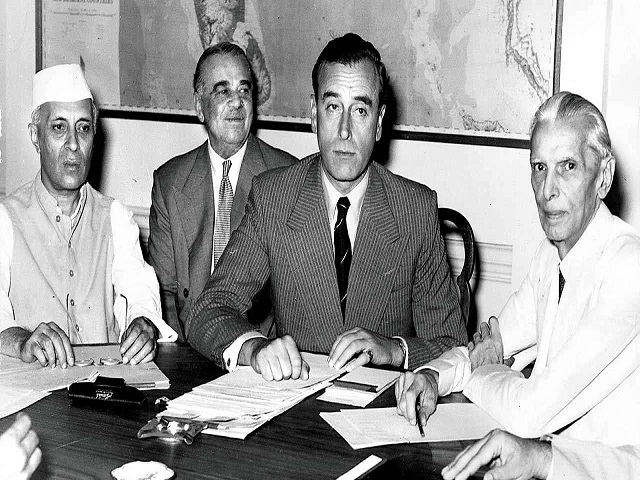
The Initial Years and Constitution
Interestingly, though India was able to form Constitution by 1950 only, it took Pakistan much longer to become a Republic. Till 1956, the head of the government was a British monarch (George VI till 1952 and Elizabeth II till 1956). In 1956, it finally became the Islamic Republic of Pakistan. Despite playing a big role in the making of Pakistan, Jinnah wasn’t able to lead it for long. After the death of Jinnah in 1948, Pakistan was suddenly left with a Political Vacuum as unlike India it didn’t have many big leaders.
Liaquat Ali, a quite weak leader was made the prime minister. In 1951, he was shot down during a rally due to some tussle with provincial leaders. Now, Nizamuddin who was the Governor-General became the prime minister and the post of Governor-General was taken up by a much stronger leader Ghulam Mohammad. Ghulam actually dismissed the whole government in 1953 due to its incompetence as it was unable to control the Anti-Ahmadiyya riots. Actually, the radical Muslims, especially in Pakistan hate the Ahmadiyya Muslims and even want them to be labelled ‘Non-Muslims’.
The setup for the First Elections
Till now, there has been NO election in Pakistan. Here, the whole of Pakistan was divided into 2 Administrative units; the four provinces of Pakistan came under one and the Bengal part came under the second. Iskander Mirza became the last Governor-General of Pakistan and after the Constitution was finalized in 1956, also Pakistan’s first President. Now, the Constituent Assembly of Pakistan was formed with 300 seats (162 in East and 138 in West Pakistan). 10 additional seats were reserved for women (5 from each East and West Pakistan). The system adopted was the same Westminster Model as in India (where Prime Minister, not President executes the real powers). but, issues started when Iskander Mirza started to express himself as an assertive President and rarely accepted any decision of the parliament. He dismissed one government after the other, some even within months without any vote of No-Confidence. Looking at the dictatorial tendencies, General Ayub Khan who was earlier himself an aide of Mirza, carried out a Coup d’état (coup to be precise). He remained the ruler of Pakistan for around 10 years (1958-1969). He was followed by Yahya Khan, another army general who ruled for 2 years.

Pic: Bangabandhu Sheikh Mujibur Rehman
The Storm of the 1971 War
The first election took place in 1970 and…eventually changed the course of Pakistan’s history. In the East, the Awami League led by Mujibur Rehman (the father of current Bangladesh PM…Sheikh Hasina) won 160 out of 162 seats, while in the West, Zulfiqar Ali Bhutto’s Pakistan People’s Party (PPP) could win only 81 seats. So this meant that Mujibur had a clear majority in the ‘whole’ of Pakistan. But, West Pakistan never wanted to follow a liberal and ‘non-radical’ Islamic leader. So, Bhutto argued that Awami League has no base in the West and that the two governments should function separately. This infuriated Mujib and East Pakistan and they started a revolution demanding a separate country. Another reason for the revolution was the Bengali language. Pakistan hardly recognized Bengali as an official language, their main focus was on promoting Urdu only as the main language.
No surprise, Pakistan decided to crush the revolution. The radical Muslims and even the radicals in Awami League started attacking and massacring the Hindus and Bengalis over there. Despite this being reported by the US Ambassador, the US was unwilling to take any action. The reason was that Pakistan and US were close allies at that time. Indian PM Indira Gandhi too repeatedly pressed this issue in front of the US President, but the US was not willing to take any action. UN too, we know won’t take any action if the US is unwilling. Then, finally, after exhausting all peaceful options, Indira Gandhi decided to attack East Pakistan. The Indian attack was led and architecture by General Sam Manekshaw and it brutally thrashed the Pakistan side as 93,000 Pakistani soldiers surrendered (one of the world records) in the famous 1971 War. This finally led to the liberation of East Pakitan into BANGLADESH and Mujibur Rehman became its first prime minister (though was assassinated later).
I really feel it baffling that leader Indira Gandhi sent a whole army across the border, just because, a genocide was being carried out against the Hindus. That party is today being labelled as ‘Anti-Hindu’. Well…you need some extremely unused brain to believe in that.
Aftermath of the 1971 War
On expected lines, it was a huge blow to Pakistan’s politics. President Yahya Khan was forced to resign and the army got sidelined to rebuild its forces and organisation. Zulfiqar Ali Bhutto became the President and under him, the Pakistan Constitution was reconstituted and the parliamentary system was restored. After that, Bhutto resigned as the President and became the prime minister. But, he was extremely intolerant and suspicious and got many political rivals and critics arrested and killed, including students and close associates.
Another turn of events came in the 1977 elections, where Bhutto’s PPP won a landslide victory. But, there were widespread charges of voter fraud to the extent that PPP members won by a margin greater than the total voters in that seat…yes you heard that right. Now, again Pakistan army’s inner patriot was awakened and they decided to intervene. Bhutto was put into jail, his government dissolved and General Zia Ul Haq became the President. Not just this, Bhutto was HANGED in 1979 for the political killings under his regime.
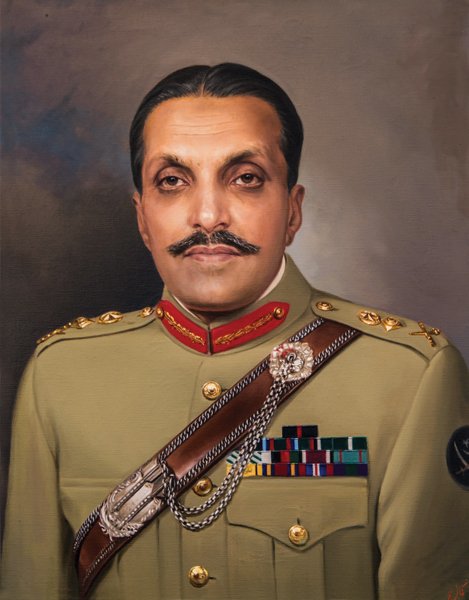
Islamization under Zia Ul Haq
Zia was a devout and hardcore Muslim and believed in Islam guiding the future course of Pakistan. He carried out strong Islamization across the country. He even called out for Pakistan and Afghanistan to fight together against their ‘aggressive neighbour’ (India of course) through Islamic practices. He also played a big role in supporting the Afghan (Mujahideen) resistance and helped them in taking shelter in camps near the Peshawar area in Pakistan. All this while, the US too was helping Pakistan as they had a common goal in Afghanistan. He conducted a referendum in 1985 for his Islamization approach and got an overwhelming response from the public (Well…nothing can save a country if even the public wears the glass of religion).
In 1985, he conducted elections where no political party but only ‘independent’ candidates contested. He himself picked the candidates and finally picked not a big name, Muhammad Khan Junejo as the prime minister. At this point, Zulfiqar Ali Bhutto’s daughter Banazir Bhutto also entered Pakistani politics. It was a highly unexpected move keeping in mind the end of her father. In 1988, Zia again intervened and dismissed his own selected government on charges of corruption and incompetence. On 17th August 1988, Zia was killed in an aircraft crash which was also carrying many big Pakistani generals and the US Ambassador. So, Ghulam Ishaq Khan, who was the Head of the Senate at that time became the prime minister.

Pic: Benazir Bhutto the first Woman PM of Pakistan
The Historic Moment in Pakistan History
In the next 1988 elections, Benazir Bhutto’s PPP won by a huge margin and formed the government and she became Pakistan’s first and the only women PM of Pakistan till now. Not just that, she was also the FIRST woman head of state in ANY Islamic country across the world. But, she failed to deliver up to he potential. Since the Soviets were leaving Afghanistan at that time, she allowed the army to continue the proxy wars. Just for appeasing the army and the radicals in the country, she gave provocative speeches regarding Kashmir, which also fuelled the killings of Kashmiri Pandits. After this, she also committed a series of political blunders. Firstly she dismissed ISI Chief Hamid Gul, tried removing Nawaz Sharif as well (from Punjab CM) and even started dominating the Army. Now, that was just the last nail in the coffin as President Ishaq Khan dismissed her government in 1990 and then came the next prime minister, an emerging leader, a rich Punjabi businessman…NAWAZ SHARIF.
Nawaz Sharif’s Short Run
Nawaz Sharif was the leader of the Pakistan Muslim League- Nawaz (PML-N) and had a similar ideology as Zia Ul Haq. He too started implementing Islamic radicalisation to please the Islamic radicals in the country. He passed the Shariat Bill making Sharia Law and Quran the essential laws of the land. This brought up tensions and insecurity among the modern factions in the country, especially the Commercial and Banking class. As lawlessness and dissatisfaction rose in the country, tensions also rose in Sharif’s coalition. After that, he too committed a political mistake by replacing the Head of Army Chief Begg in 1991 with Asif Nawaz. Surprisingly, Asif soon died in a mysterious way with suspicion of being poisoned.
Here, as President Ishaq Khan’s term was nearing an end, he appointed Abdul Waheed Kakkar as his successor without even consulting Nawaz Sharif. This led to tensions between the two and finally, the President dismissed the Sharif government and the National Assembly. But, the Supreme Court intervened and ordered Sharif to be reinstated. Sharif and Ishaq too formed a political deal and agreed to return back to their old posts. But, looking at the dire situation, the Army again revoked its patriotism and dismissed both the President and the PM citing they had lost much of their credibility.

Pic: Nawaz Sharif striking a political deal with Zia Ul Haq
The Rise and Fall of Benazir Bhutto
The army appointed Wasim Sajjad as the President and Moeen Qureshi…a World Bank economist as the interim prime minister. Qureshi actually brought many appreciable changes. He devalued the rupee, ordered repayment of government debt, took steps against the landlords, and stopped corrupt practices and allotment of public land to politicians. Though these steps helped the government in increasing the revenue the inflation kept on rising. In the 1993 elections, PPP again came out victorious and Benazir was back as PM and Farooq Leghari became the President. By now, the US started losing its trust in Pakistan, as it no longer needed it in the Afghan conflict (the Soviets had already left). The US blocked Pakistan’s Nuclear Programme and also placed it on the ‘Watch List’ for promoting terrorism.
The political conflict got heightened when Benazir’s brother and mother accused Benazir’s husband Asif Ali Zardari of corruption. The situation got worsened when Nawaz Sharif even presented papers citing the excesses. As a popular fact, Asif was alleged of taking a 10% Commission on every government contract, so he was nicknamed ‘MR. 10%‘. Here, the corruption charges kept on getting stringent as even PM Benazir’s name came up in a banking scandal. Other than this, President Leghari too was accused of a land deal scam. The government was getting on the back foot and that became quite visible. In a serious and rather suspicious turn of events, 40 Pakistani soldiers were arrested for plotting an overthrow of the government. Murtaza Bhutto (Benazir’s brother) who was accusing the Benazir government was killed in a police shootout. After this, surprisingly, President Leghari dismissed the government of his own party and Meraj Khalid was made the interim prime minister.
Nawaz Sharif’s Return and the Emergency
In the 1997 elections, Nawaz Sharif’s PML-N won a majority and PPP was badly wiped out. Now, here Nawaz Sharif brought a historic 13th amendment, which withdrew the President’s power to dissolve a prime minister and the government. He even tried to bring up a 14th Amendment, which could have ensured party discipline for the members, but it was struck off by the Supreme Court. A tussle started as Nawaz tried to weaken the Court by reducing the number of SC members from 17 to 12. he succeeded in getting the power to relieve the Chief Justice. Here, economic conditions, Balochistan issue and Sindh and NWFP problems were in no better shape than before.
In 1997, Pakistan tested a series of nuclear devices after which several countries got angry and cancelled their respective deals with Pakistan. This situation also outraged the common people as they were baffled that a country struggling to meet its ends is wasting money on nuclear tests. Now, an insecure Nawaz Sharif declared an emergency. During this, he got closer to the Islamic groups. He strengthened the Shariat law, Federal Shariat Court and even brought punishment against adultery. Nawaz Sharif was getting too autocratic in his ways and was just focussing on his own ‘pet projects’ in the name of development. Seeing all this, Pakistan army chief Jehangir Karamat criticized Sharif. But, Sharif couldn’t even tolerate that and he got Jehangir retired and brought a new guy…Pervez Musharraf (interestingly a Muhajir) on the post. Little did he know that he was changing the course of Pakistan’s history.
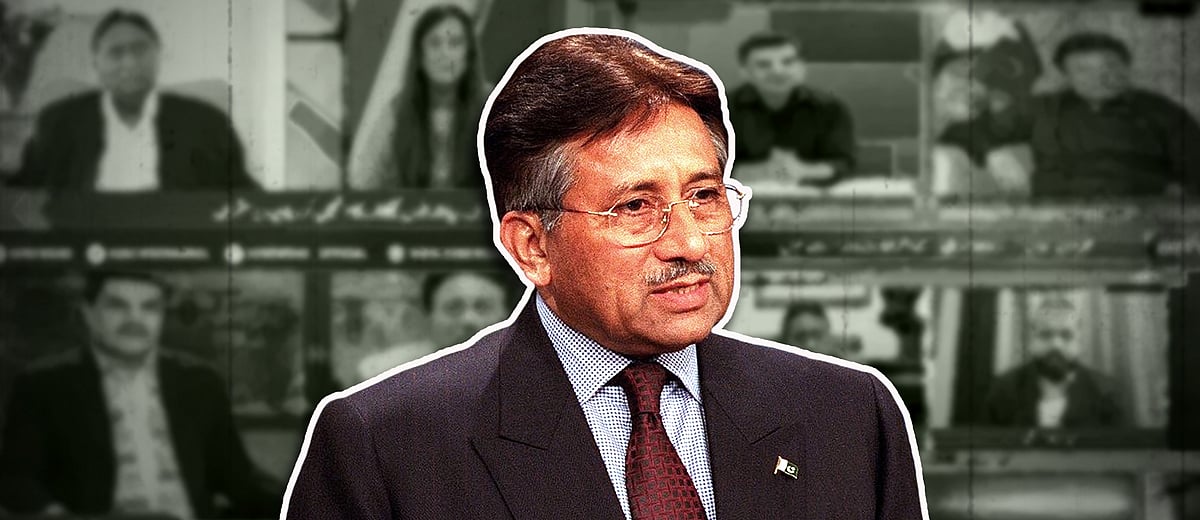
Pic: Parvez Musharraf
Pakistan Under Pervez Musharraf
Now, comes another big moment, as Pakistan attacks India in 1999 and KARGIL War breaks out. Nawaz was in the US at that time and President Bill Clinton asked him to pull back his troops. Nawaz too readily agreed in front of the press, but his general Musharraf was in no mood of doing that. Musharraf believed that Pakistan has an advantage and should continue on the mission. But, all Musharraf’s calculations went wrong, his plans failed miserably and Pakistan lost that war badly. On expected lines, Nawaz considered Musharraf the reason for this humiliation and tried to oust him from his position. But, there comes the turning point. While Musharraf was out overseas, other army generals showcasing their loyalty to Musharraf arrested Nawaz only. When Musharraf returned, he dissolved the whole assembly and suspended the Constitution.
Musharraf became the Unofficial DICTATOR of Pakistan. He gave himself the post of ‘Chief Executive’ where he held total powers. Though the judiciary functioned, it wasn’t allowed any say in any matter of the Chief Executive. Also, President Mohammad Rafique Tarar continued in his post, but his role was only advisory. Musharraf went one step further and charged Nawaz with high crimes and he was sentenced to a long prison term. But, international pressure started mounting, especially from Saudi Arabia in favour of Nawaz. So, Nawaz was released from jail but on the condition of he remained out of Pakistan for 10 years.
9/11 Attacks and Change in the US Stand
In 2001, President Tarar was forced to retire and Musharraf made himself the President. In the same year, Mujahideen carried out the 9/11 Attack on the World Trade Centre and the US changed its soft stance with Pakistan. Actually, Pakistan had always supported the militants and terrorist activities by the Taliban in order to have control over Afghan politics as well. But, now the US gave a clear ultimatum to stop all this bullshit. Musharraf had no option but to agree. This infuriated the poisonous and communal minds in Pakistan and they expressed their displeasure. Some Pakistani even crossed the border to join the Afghan fight against the US. To escape the US bombings, many Afghans too crossed into the Federal Administered Tribal Area (FATA) of Pakistan. The US again pressurized Pakistan to crackdown on the tribal militants. Although the Pakistan army did carry out attacks, they were half-hearted in nature and were met with little success. Musharraf even dismissed incompetent army officers and those sympathetic toward the Taliban. But, still, the US was not satisfied with Pakistan’s overall actions.
Also Read: My old Article for more information about the Afghanistan episode and US’s Role
A String of Disturbances in Pakistan
Just like Zia Ul Haq, Musharraf held a referendum regarding should he continue his rule for the next 5 years, and the result was an overwhelming Yes. The Constitution was restored, and President’s powers were increased. In the 2002 elections, Musharraf’s adopted party PML-Q emerged as the single largest party and formed a coalition government. Here, on one hand, Musharraf was fighting against religious radicalism, but on the other hand, was also promoting the same in Kashmir to create disturbances across borders (in India).
Now, we all know that Atal Bihari Vajpayee was a prime minister, who perhaps did the MOST in regard to improving India-Pakistan relations. As a result, despite several attacks at the LOC, Pakistan declared a unilateral Ceasefire in 2003. This was a CRIME in the eyes of radical Islamists in Pakistan. They were constantly accusing Musharraf of ‘secularizing’ Pakistan. As a result, there were two assassination attempts on Musharraf, but somehow he was able to survive both.
Musharraf’s Panick for Power
So, Musharraf got worried regarding his post and brought the 17th Amendment to increase his powers. It gave the President the power to dismiss a prime minister and dissolve the National Assembly. Also, it gave President the power to appoint the army chiefs and provincial governors. He made Shaukat Aziz the prime minister but himself continued to hold both the posts of the President as well as the Army chief. Then, Pakistan was hit by a devastating Earthquake killing and displacing thousands. This combined with rising sectarian violence and suicide bombings at mosques made the atmosphere very disturbing. Looking at this, Musharraf somehow tried getting another term as the President. But after the protests by the Opposition, the Supreme Court objected to him holding both posts.
So, Musharraf in order to save himself dismissed Chief Justice Iftikar Mohammad Chowdhary. Though, the Supreme Court again intervened and overturned the decision, reinstating Chowdhary as Chief Justice. But, an electoral college consisting of the Parliament and 4 provincial leaders chose Musharraf as the President for the next 5 years as well. But, Supreme Court being sceptical of its constitutionality, kept Musharraf’s appointment on hold. Musharraf again panicked to save himself and declared a state of Emergency. The Constitution was suspended, Supreme Court was dismissed. He reconstituted it only as per his choice and the Court approved his appointment. Musharraf too resigned from the post of army chief and became just a civilian while remaining the President.
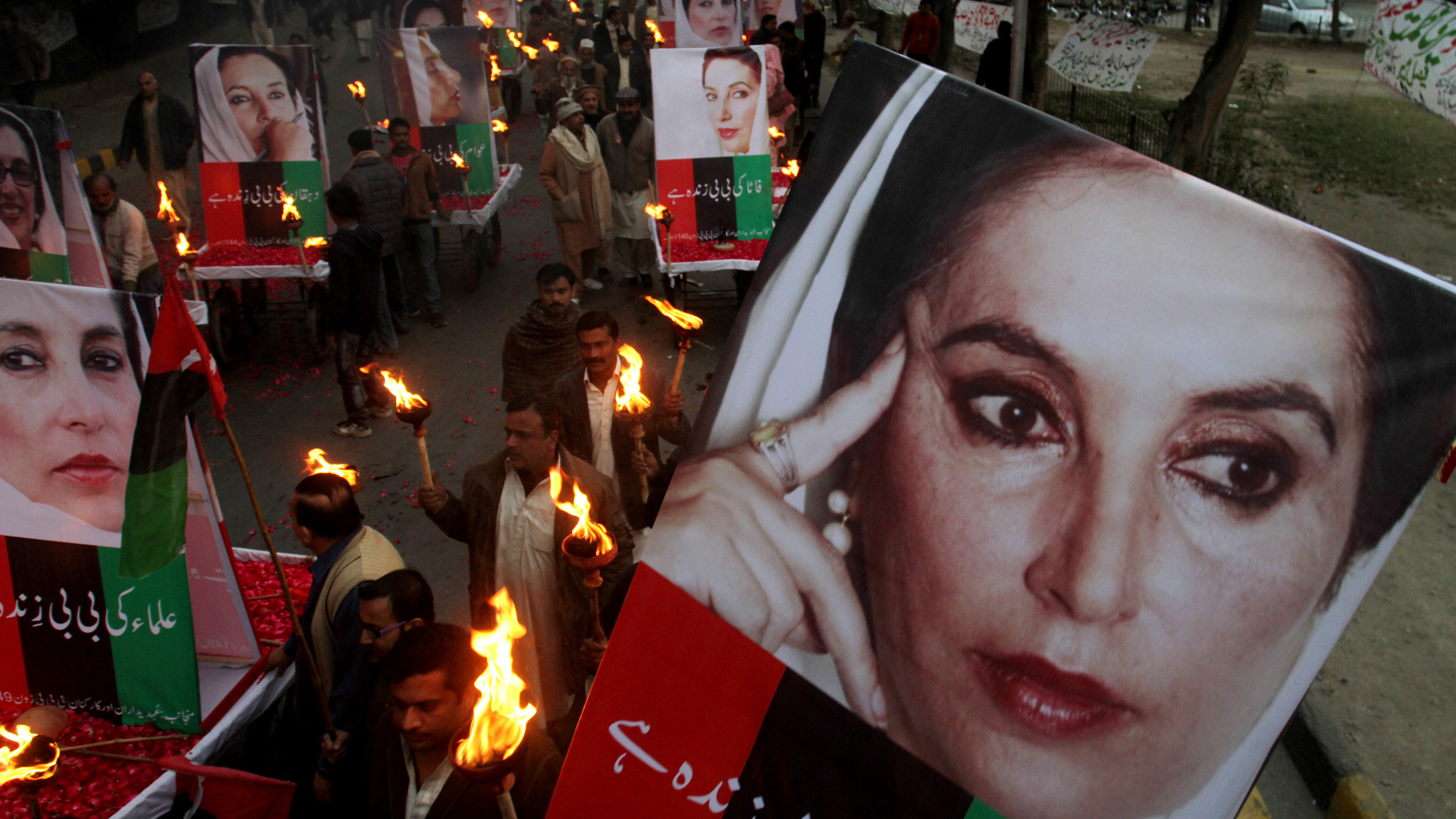
Pic: Protest March after the Assassination of Benazir Bhutto
The Assassination of Benazir Bhutto
Now, Benazir Bhutto and Nawaz Sharif decided to end their exile, return to Pakistan and run the election together. But, little did Benazir know that she was soon going to meet an even more fatal end than her father. The atmosphere was developing in their favour as the public was seriously fed up with Musharraf. Benazir was again well poised towards becoming the Prime minister for a record third term. But, an unexpected bomb blast takes place during a rally at Rawalpindi and another big political figure in Pakistan was assassinated. This sparked off riots and violence across the country and Musharraf again imposed an Emergency. Finally, elections happened in 2008 and Musharraf’s party PML-Q was defeated. PML-N and PPP formed the government in coalition and PPP’s Yusuf Raza Gilani became the prime minister. After this, Impeachment charges are brought against President Musharraf. Sensing an embarrassment, he himself resigned saying “I had already decided to resign once stability comes in Pakistan politics’. In 2019, Pervez Musharraf was sentenced to DEATH under the charge of TREASON for unconstitutionally imposing the 2007 Emergency. But, the death sentence has been annulled as of now by the Lahore High Court.
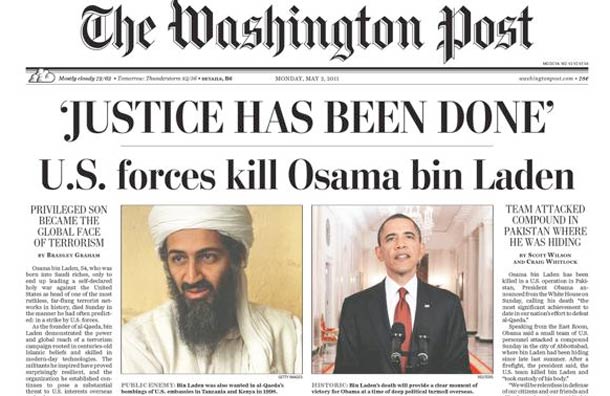
Pic: Osama Bin Laden killed by the US Forces
Pakistan gets Exposed
At this point, in 2008, another big terrorist attack takes place and unfortunately, this time the victims were some among us. On 26th November, a terrorist attack famously known as 26/11 took place in the Mumbai Taj Hotel. It became one of the lowest points of Indo-Pak relations worsening it severely. After that, In 2009, Barack Obama ordered US drone attacks over the federally administered tribal areas. These areas were being used as a haven for Pashtun militants who supported Afghan militants and attacked international forces. It also lead to several civilian killings followed by political outrage and protests. Another big incident happened when the CIA killed Osama Bin Laden. What was really notable here is the fact that Osama was living near the prestigious Military Academy, which clearly meant that Pakistan knew and was aiding him and similar terror groups. This was a low and rather black point for Pakistan as ut stood exposed on the world stage.
Pic: Nawaz Sharif ousted as the PM for Corruption
The Rise and Fall of Nawaz Sharif
This was the FIRST EVER government to complete a 5-year full term in Pakistan (but not under one prime minister). In the 2013 elections, the PPP lost public support and Nawaz Sharif came out victorious. In this regime, Nawaz shed off his religious appeasing image and emerged as a modern reformer. As a result, the economy improved substantially. Nawaz also focussed on improving foreign relations including that with India. He also tried negotiating with Tehreek-e-Taliban Pakistan (TTP). (the Pakistan faction of Taliban continuously carries out attacks in Pakistan for achieving their greater goal of full control over Pakistan and the Taliban)
At this point…China too entered the story and invested millions in Pakistan through its Belt and Road Initiative (BRI) and the China Pakistan Economic Corridor (CPEC). This facilitated cheaper and more efficient trade routes for Pakistan but at the same time also spiralled Pakistan’s debt. In 2015, the Panama Papers matter surfaced (where people do tax evasion by keeping their money in tax havens), and Nawaz Sharif was among the top names. A high-level probe was carried out against him and the Supreme Court disqualified him from holding any office. He was forced to resign and was sent to exile in London. Shahid Haqqan Abbasi became the new prime minister. Finally, in 2018 both Nawaz and his daughter Maryam were convicted and arrested in the case. Nawaz was further imposed with a fine of $25 million along with a 7-year jail term.

IMRAN KHAN: A Small Biography of the ‘KAPTAAN’
Imran Khan…the Oxford graduate and a handsome Superstar in the cricketing world. The highest point of his career was leading Pakistan to the 1992 World Cup victory. He even had a very colourful love life with multiple relationships and 3 love marriages. The first marriage was to a British Christian, Jemima Goldsmith (1995-2004). The second one with Reham Khan (2014-15) ended on a bitter note. While the third one happened with Bushra Bibi (2018-present), which in his own words, moved him deeper into spirituality and Islam. Now, all this gives an impression that he is a very progressive and modern person. But, sadly that is not the case or ceased to be the case as his life progressed. He has expressed his ‘sexist’ and ‘orthodox’ Islamic thoughts multiple times. He once said (while being the President) “Men getting attracted to women is natural…that’s why Women should wear Burqas…so that the boys don’t have that Temptation”. He has even supported the Blasphemy Laws of Pakistan and asserted his support for those who consider Ahmadiyyas as Non-Muslims.
But, in the political world, he has had an all different journey. He formed the party PTI (Pakistan Tehreek-e-Insaaf) with the aim of taking Pakistan to new heights defeating the two grand old parties. He has been in politics since 1998, but his start wasn’t good as his party lost all 5 seats it contested. He came into the limelight after winning the provincial elections of 2008 and 2011. In the 2018 elections, Imran Khan was up against the two main parties of Pakistan. While PML(N) was being led by Nawaz’s brother Shehbaz Sharif, PPP was being led by Benazir’s son Bilawal Bhutto Zardari. But, this time the public was seriously tired of the repeated incompetent, nepotistic and corrupt governments of the Sharif and the Bhutto family. Imran Khan…a rich and patriot cricketer entering politics for the nation was really the last hope for the public. On expected lines, Imran came on top being the single largest party with 155 seats out of 372 seats. But, he was still some short of the majority and formed a coalition with smaller parties and independents.
Also Read: My Old Article on the whole history of North-East India
Pakistan under Imran Khan
With time, the US withdrew the $300 million it used to give as military aid citing insufficient efforts from Pakistan to combat terrorism. So, Imran negotiated and arranged investments from countries like Saudi Arabia, UAE and China. Also, he tried to balance his image by doing a crackdown on orthodox religious schools and wanted terrorists. But, the PULWAMA Attack in 2019 that killed 40 Indian soldiers was a global embarrassment. It was followed by an Airstrike on the terrorist camps in Balakot, Pakistan from India’s side. It was India’s first attack on Pakistan after the 1971 war and any chances of good India-Pak relations got further bleak. Though Imran Khan wasn’t accused of Corruption, he was continuously failing on the economic front. The inflation and unemployment were getting out of hand making the public restless. The Opposition sensed an opportunity here and they all came together. They all made a front and other than PPP and PML(N), the front included parties of almost all thinking and ideologies. Nawaz’s daughters Mariam Nawaz and Asif Zardari were the main popular faces leading the Opposition, holding huge rallies and continuously raising the public issues.
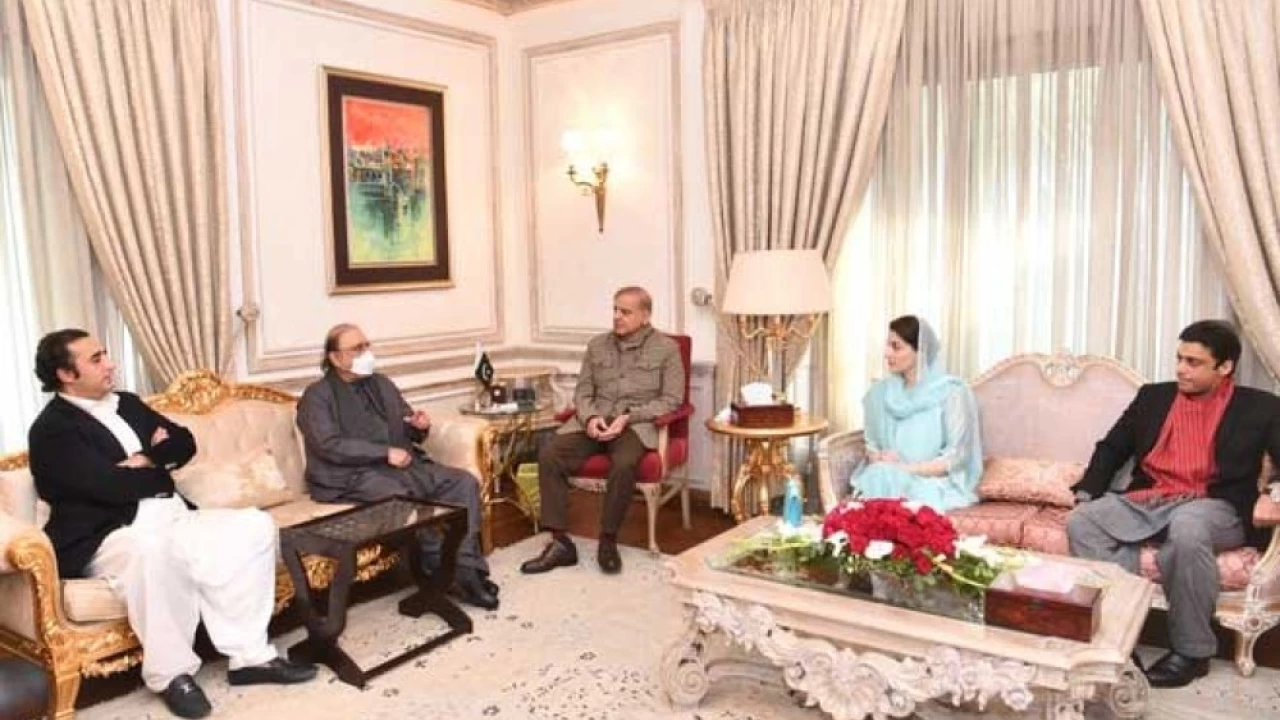
Pic: The whole Opposition united against Imran Khan
Rounds of Friction in Pakistan Politics
In the 2021 Senate Elections, Abdul Hafiz Sheikh, the Imran government’s finance minister was also contesting. Now, despite Imran being his star campaigner, he lost the elections to Yusuf Raza Gilani (ex Pak PM). The Opposition got pumped up and came up with the demand for Imran’s resignation. Now, Imran himself called a ‘Voluntary Vote of Confidence’ and came out victorious. Till then, all 178 MNAs were with him. But, the story started to change by 2022. As many as 24 PTI (MNAs) clearly said that they are not happy with Imran’s work and they will bring down the Imran government while being in his party only. (Defection involves serious punishment in Pakistan). Imran knew that his days are numbered so he tried wooing his allies. He offered the post of Punjab CM to PML(Q) and even offered a ministry to MQM-P, but somehow the party went into the Opposition Camp.
Imran also brought the ‘Foreign Conspiracy’ theory and said that it is all a conspiracy planned by the US. He said that due to his visit to Moscow, the US has held the hand of the Opposition and also presented an ‘unverified’. On a surprising note, he even praised India for its independent foreign policy, being in QUAD and still having deals with Russia. It also birthed a funny moment, when Mariam told Imran “If you like India so much…then better go to India” (Now…we have heard something close to this before in India). On the other hand, Imran kept on saying that “I’ll play till the last ball”. And…then comes 3rd March 2022, the day of vote of No Confidence. But, Imran had kept a surprise delivery reserved for the climax. The Deputy Speaker Qasim Suri of the parliament dismissed the vote citing foreign involvement and in fact DISSOLVED the whole assembly calling out for fresh elections. By this point, Imran seemed to have clinched a last-ball thriller…but it seemed he had ‘OVERSTEPPED’. Suddenly, Pakistan’s CJI Umar Ata Bandial came forward and took a Suo Moto Cognizance. The 5 judge bench found the whole proceedings Unconstitutional. They rubbished the idea of fresh elections and fixed the vote of No Confidence on 9th April. On the 9th of April, Imran didn’t come as he knew that he doesn’t have the numbers. On expected lines, the government fell and the Opposition formed the government with Shebaz Sharif taking the oath as the prime minister.
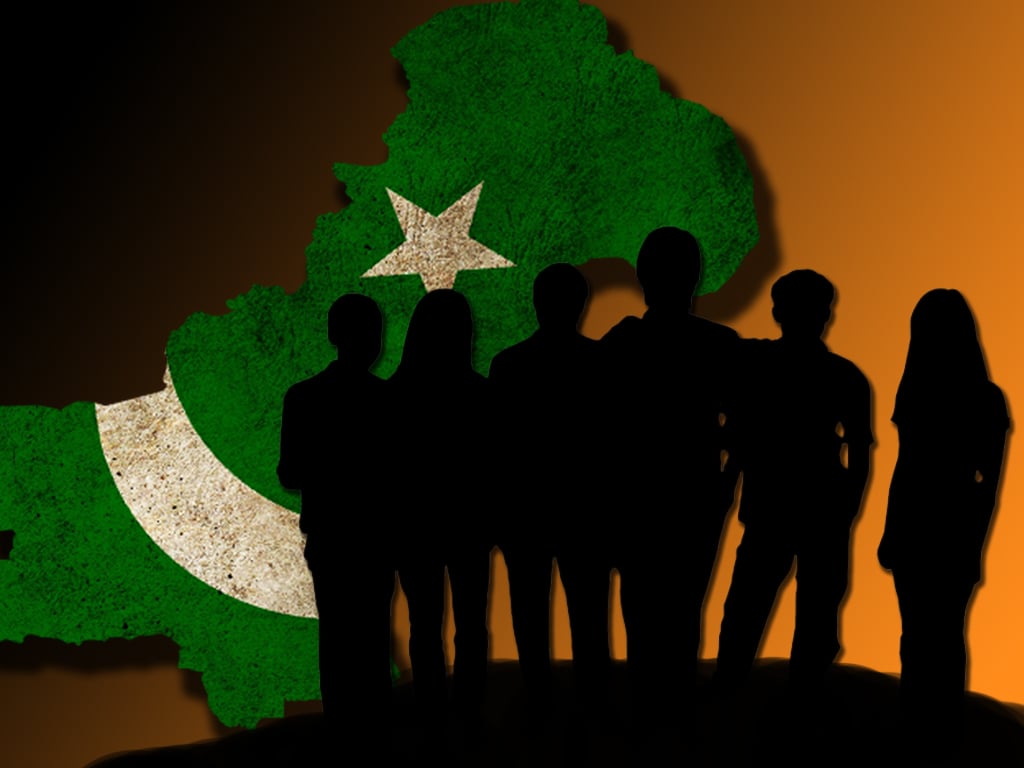
Pakistan’s Future is in its own Hand
Actually, all this is good news for Pakistan. Here, we need to admit that the Pakistan Supreme Court has done a marvellous job. Also, the fact that Army didn’t intervene in the episode (at least directly) suggests that Democracy has improved there. Also, the game is not yet over for Imran as the elections are due next year only. If the public really has trust in him, he might come up victorious with a full majority this time. At last, I would just say that Pakistan also got independent at the same time as us. But, forget about development, it took them so long just to become a republic and hold an election. The democratic functioning was continuously disrupted by the bloody coups carried out by the Army. Now, I acknowledge and respect the role any Army plays for its country. But, running a country is not its job. A country will learn from its mistakes and improve with time, the army has NO right to teach governance by carrying out coups.
One big reason for all this was the fact that the country was born in the name of RELIGION. So, even the religious masters being unsatisfied was a big problem. Plus, the governmental policies inspired by Sharia laws and radical thinking will seldom do any country any good. In India, we might be having tons of issues and shortcomings, but at least the Army doesn’t interfere in every second thing. Also, I again bow down in front to India’s founding fathers for not making this country on religious lines. Also, in India we never judge people on the basis of religion, never lynch people for following their faith, never make genocide calls against other religions, never assert making the country on Religion and also never ask them to go to Pakistan. Well…if you aren’t satisfied by the last line, then do a deep introspection about whether we are heading towards what we always hated. Anyway, I would like to end the article by extending my best wishes to Pakistan. I hope it has learned the cons of running a country on religious lines. So, I genuinely hope that it progresses along the lines of peace and development, and achieve every good it deserves. And of course, it’s my wish that the India-Pakistan relations improve and rather blossom when we celebrate our 100 years of Independence together in 2047.

